Best of all - each one of them will help your little ones learn STEM skills and gain the upper hand in this new, tech-dominated world.
]]>So you've heard that kids love science kits and decided to get one for your kid? Excellent!
We'll tell you what they are, what makes them so popular, and then give you a list of ten best science kits to spark your child's curiosity. Let's dive in!
What is a science kit?
First things first, you can't choose quality science kits unless you know they are, right?
Well, think of a science kit as your kid's own science lab where they explore different scientific concepts and conduct their own experiments in an extremely engaging and fun way.
With gadgets like a magnifying glass, test tubes, safety glasses, and other real science tools commonly included in kits, little scientists get to dive into a world of discovery. These kits turn complex scientific principles into exciting, hands-on activities.
And it's not just about observing chemical reactions!
Many science kits focus on other areas like engineering, electricity, robotics, and even environmental science. They offer a range of experiences, from building simple machines to designing electrical circuits.
The variety of options ensures that you find science kits that align with your kid's interests, helping them grow and learn—and that's the topic we'll cover next.
Why are science experiments and kits beneficial for kids?
They say that repetition is the mother of learning. We'd like to add active participation to that, because when kids get hands-on with science experiments and activities, the learning experience becomes much more powerful and memorable.
Need a piece of evidence?
Sure, we've got you. Or, the University of Chicago has.
According to a UChicago study, learning by doing "helps students perform better in science". Alright, but how exactly?
Well, the study found that students who took a hands-on approach to learning had activation in sensory and motor-related parts of the brain when they later thought about concepts such as angular momentum and torque.

Image source: University of Chicago
This finding tells us that it's better to allow kids to directly experience the concepts they're learning about, rather than just reading about them.
And since you can't really fling your kid into space to learn about gravity and planetary motion, science kits are the next best thing.
Besides brain activation, hands-on experiments help kids develop their critical thinking and problem-solving skills, as they learn to hypothesize, experiment, and independently evaluate results.
All in all, when you combine active participation with the natural curiosity of children, you get a powerful mixture that transforms learning into a brain-boosting adventure. Sprinkle some kits into the mix, and you have the perfect recipe for sparking a lifelong passion for science and exploration.
Fun, hands-on way to acquire STEM skills
By now, we've established that there are tangible benefits to science kits for kids.
Unfortunately, just because something is good for kids, it doesn't mean they like it. Broccoli, bedtime, and brushing teeth are just some of the examples.
The great news is that, unlike the reluctant acceptance of broccoli and bedtime routines, science kits fall into the category of educational activities that kids actually enjoy and look forward to.
In fact, kids are really into this hands-on learning style. Research shows that an impressive 73% of students would prefer their science classes to be taught only through experiments, which shows us their enthusiasm for active and engaging educational experiences.
So, what are you waiting for? Educators love them, kids love them, and now you will, too.
Let's find the most engaging ways to introduce science to your little one.
10 best science kits for kids: Our top picks
Ready to see what's out there? We'll help you find the perfect science kit for your kid, starting with a true classic, the MEL STEM collection.
Science kit #1: MEL STEM
MEL STEM is one of the three lines created by MEL Science, a company renowned for its engaging and educational science kits for kids.
As its name suggests, the line focuses on STEM learning by walking kids ages five to ten through projects such as building a printing press, a gyroscope, a hydraulic jack, and more.

Image source: MEL Science
Why it's a good pick
If your kid is easily bored, you'll like this option because it's packed with versatility from project to project. This means that no two boxes follow the same STEM theme, providing a diverse learning experience with every new box.
Pros and cons
Although versatility is usually a desirable feature, constantly changing themes might be a bit of a challenge for kids who want to focus on one area.
This approach may be exciting, but also slightly overwhelming for those who love to stick with one subject and really explore it.
Unique features
Unlike most other kit providers, MEL Science lets you mix and match the kit lines. For instance, you can sign up for both STEM boxes and physics boxes and alternate between them monthly. Just remember what we said about the twofold quality of versatility, and let your child be the guide.
Price
If you decide to pay for the subscription monthly, you'll pay €34.90 per month. The yearly billing option reduces the monthly price to €29.90 per month.
Science kit #2: CircuitMess STEM Box
The STEM Box subscription is a kit service designed by CircuitMess, and it's here to help your budding scientist explore the world of electronics and programming.
With exciting projects like a robotic arm, a DIY smartwatch, and AI-powered self-driving cars, these boxes are among the best science kits for introducing real-world STEM and scientific concepts to kids.

Why it's a good pick
The CircuitMess STEM box demystifies different concepts related to electronics and technology, such as end-to-end encryption, microprocessors, artificial intelligence, and more. These loaded topics become approachable and understandable for kids, thanks to the hands-on projects and step-by-step instructions included in each kit.
Pros and cons
Your kid wants to get into robotics? Then look no further. STEM box always includes hardware components and software elements in its projects, providing essential building blocks for any robotics journey.
From building the physical structure of robots to programming their actions, these kits offer a full spectrum of skills necessary for budding roboticists.
However, despite the clear instructions, the combination of hardware and software learning might be challenging at first, so your kid should brace themselves with patience.
Unique features
While many science kits for kids help little scientists create cool toys, STEM Box goes a step beyond. It allows kids to build real, usable devices that they can use in everyday life. How's that for practical learning?

Price
If you want to try out a kit and aren't yet ready to commit to subscribing, you can purchase a single box for $89. Four boxes shipped quarterly are priced at $65 per box, and eight boxes shipped over two years are priced at $63 per box. Keep in mind, these prices include a special Christmas discount, so act fast and get your kit while this festive deal is still around!
Science kit #3: Smithsonian Mega Science Lab
Next up, here's a kit that charmingly explores classic, old-fashioned science experiments: the Mega Science Lab by Smithsonian.

Image source: Amazon
Why it's a good pick
This Smithsonian kit is an excellent choice for kids eager to explore topics such as geology, meteorology, paleontology, and a few more -ologies. There's even the reusable volcano experiment, a classic science fair project that never fails to amaze.
Also, if your kid is interested in similar basic chemistry experiments, you might want to check out this article for more ideas.
Pros and cons
The kit includes absolutely everything you'll need to conduct multiple fun experiments, so you don't have to worry about a last-minute run to the store for extra supplies.
On the flip side, this means that the kit is quite structured and doesn't leave much room for open-ended play or creative improvisation.
Unique features
Many kits focus on one or two projects at a time, which isn't the case here. The Mega Science Lab contains six different science experiments, offering hours of fun and diverse learning opportunities.
Price
You can find this kit for kids available at multiple retailers, each offering it at different prices, varying around $19.
Science kit #4: Snap Circuits: Beginner Electronics Exploration Kit
What if your little scientist wants to get into electronics but isn't quite ready for the complexities of traditional circuitry?
The Elenco Snap Circuit Beginner Kit is a great choice in that case. It's designed with safety as a top priority, making it perfect for young scientists.

Image source: Discount School Supply
Why it's a good pick
The Snap Circuit Beginner Kit makes learning electronics easy and fun. With no tools or prior knowledge required, kids can build cool projects such as AM radios, burglar alarms, and more.
Pros and cons
The kit's components snap together easily, making the creation of electronic devices intuitive.
The disadvantage of such a simplified approach is that it doesn't fully replicate the real-life circuit design, which means that your kid won't be able to experiment with more complex aspects of electronics, like detailed wiring or soldering.
Unique features
Simple components usually mean simple projects, and cool projects often require more complex parts. However, this kit has a unique combination of easy-to-use parts that allow for the creation of complex devices.
Price
The official website lists this kit for sale at a price of $32.
Science kit #5: Kids Beginner Microscope AmScope 120X-1200X
When it comes to science experiments, a microscope opens up a whole new world of discovery. The AmScope Kids Beginner Microscope is the perfect tool for this, helping budding scientists explore the microscopic world around them.

Image source: AmScope
Why it's a good pick
As this kit is developed by AmScope, a leading retailer of professional microscopes and accessories, it offers a balance between professional-grade quality and kid-friendly design. This means that you get a top-quality tool that's both educational and easy to use.
Pros and cons
The set contains 52 pieces, including prepared slides, materials for a lab shrimp experiment, and many more components needed for an immersive learning experience that shows kids the world that we can't see using only our eyes.
However, considering that this microscope is a serious piece of equipment, first-timers may find handling all those zoom levels and focus knobs a bit tricky.
Unique features
Kids love science and microscopes, but many microscope kits for kids are low-quality and plastic. The AmScope Beginner Microscope is a standout here because it has a metal body, providing robust construction and high-quality optics. It's a piece of equipment a real scientist would use!
Price
The kit is available at the official AmScope website for $50.
Science kit #6: Doctor Jupiter Ultimate Science Kit
Your kid enjoys observing chemical reactions? Alright, how about 135 of them? With the Ultimate Science Kit by Doctor Jupiter, your child can put on their lab coat and conduct experiments for months on end without running out of projects.

Image source: Amazon
Why it's a good pick
The sheer quantity of experiments to conduct makes this kit an excellent pick for the most curious kids who can never get enough of exploring. Over a hundred projects guarantee that you won't have to buy multiple science kits to keep your kid occupied.
Pros and cons
Besides classic activities like mixing colors by making different elements react, the kit also lets you do more interesting projects, like creating a glow-in-the-dark lamp, or practical ones like making soap that you can actually use to wash hands.
Bear in mind—with all the measuring cups, baking soda, and test tubes from this chemistry set, you can expect a bit of mess. It's all part of the learning process, but might require some extra clean-up.
Unique features
From fizzy potions to soap making, the Doctor Jupiter chemistry set has it all. While most other kits focus on one or two categories, this one truly explores the wide spectrum of chemistry.
Price
The price of the kit depends on the retailer you choose to get it from, but it's usually around $35.
Science kit #7: Wacky Robots
Robotics can sound intimidating, but with the help of Wacky Robots, this area of the science world becomes approachable and fun.

Why it's a good pick
Decade counters. Voltage regulators. Potentiometers.
The terms like these may deter some children from trying their hand at electronics and robotics. Luckily, the Wacky Robots science kit breaks down these concepts into simple, engaging steps. The goal of the kit is to build adorable little bots, all while learning the basics of electrical engineering in the process.
Pros and cons
The kit requires kids to use soldering equipment, pliers, and other tools, offering an authentic experience in robotics. Isn't that much more engaging than merely snapping parts together?
Still, the fact that there are real tools involved means that adult supervision is necessary, which may limit the independence in exploring the kit.
Unique features
The Wacky Robots kit offers just the right amount of challenge to keep kids learning and applying their problem-solving skills while still having fun. The easy-to-follow instructions are there to ensure that the process remains enjoyable even if some hiccups occur.
Price
The kit is available as a subscription. A single set of three robots is priced at $99, a yearly subscription of four sets is priced at $87 per box, and a two-year subscription lowers the price of a box to $79.
Science kit #8: KiwiCo Kiwi Crate
KiwiCo is a well-known name in the kit-for-kids community, and Kiwi Crate is one of their kits that focuses on innovative science projects.

Image source: KiwiCo
Why it's a good pick
The Kiwi Crate is much more than a kit with components for STEM learning through simple projects. Each kit includes additions such as Kiwi's scientific magazine and related DIY activities, inspiring kids to explore beyond the crate.
Pros and cons
In a sea of flimsy, plastic kits, Kiwi Crate caters to parents looking for safer, more sustainable materials. That's why Kiwi's products are often made of wood, cardboard, or other environmentally conscious materials.
However, it's important to note that these eco-friendly projects might not be as durable as plastic ones and may need more careful handling during playtime.
Unique features
In an age where kids—especially older kids—might be tempted to spend all day indoors, Kiwi Crate brings a refreshing change.
Some activities from this line, such as building and flying kites or creating arcade claws, encourage kids to step outside, combining the fun of physical play with scientific discovery.
Price
Depending on the length of your subscription, you'll pay between $24 (one month) and $19 (twelve months) per box.
Science kit #9: 4M Magnet Science Kit
The next science kit on our list explores physics. More precisely, it deals with its prominent field: magnetism. With the Magnet Science Kit by 4M, your kid can dive into the world of magnetic forces through engaging experiments and games.

Image source: Amazon
Why it's a good pick
Magnets are often overlooked and used simply as a means of completing other activities in science kits for kids. With a specialized kit like this one, your kid gets to see firsthand how magnets work and experiment with their unique properties.
Pros and cons
Rather than just slapping a magnet souvenir onto the fridge and calling it a day, with this kit, you can explore the wider capabilities of magnets through ten experiments.
Note that the kit contains many small pieces, which can be easily lost or pose a choking hazard for younger children. So, your kid should be careful in their magnetic adventures!
Unique features
In addition to pre-defined activities, the kit contains components for building a magnetic sculpture, encouraging your kid to get creative and explore their artistic side, which is a feature that frequently falls out of focus when it comes to science.
Price
You can find this kit in multiple stores, with its price ranging from $12 to $16.
Science kit #10: Thames & Kosmos Nanotech
The last item on our list is something you probably haven't considered before: a nanotechnology kit. Created by Thames & Kosmos, this kit aims to introduce young learners to advanced science.

Image source: Thames & Kosmos
Why it's a good pick
If your kid has already dabbled in the worlds of biology, chemistry, or astronomy, they will be intrigued by a new field to explore. This kit is an excellent introduction to a field that's shaping our future, providing a fresh learning experience beyond traditional science subjects.
Pros and cons
The Nanotechnology Kit contains both scaled-up models and real nanomaterials, making abstract concepts tangible and understandable.
However, because of the sophisticated nature of the materials and concepts, it may be more suitable for older kids with a strong interest in science.
Unique features
Simply put, the topic of this kit is what makes it unique—not many kits (if any!) explore nanotechnology.
Price
The science kit is sold at around $125.
Which science kit for kids is the best one?
Picking the best science kits for your little one can be as tricky as lab experiments themselves. Seeing as your kit of choice should make science fun and engaging, it's vital to follow your child's interest.
If your kid is all about robots, then go for a robotics kit. For those who love variety, select a kit that's jam-packed with different scientific disciplines.
Remember, the perfect kit is the one that gets your kid so excited about learning and exploring that they can barely sleep at night!
So, whether your kid is dazzled by the mysteries of the solar system or intrigued by the idea of growing their own crystals, listen to what they have to say, and you'll have your answer.
]]>




















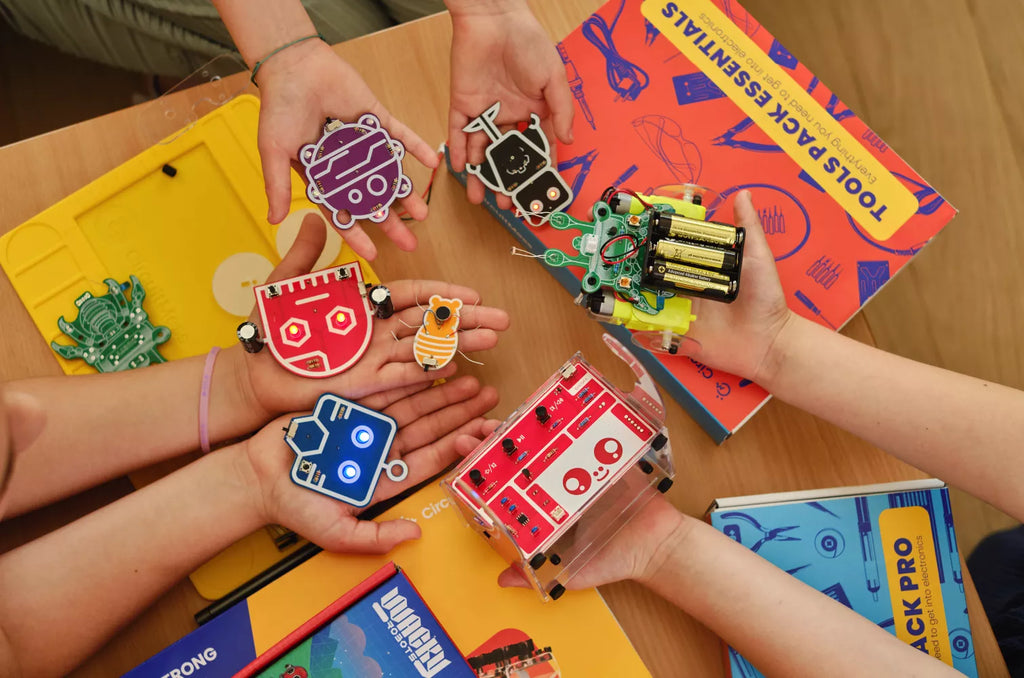 Instead of every month, this STEM subscription box is delivered every three months. However, each new box includes three new hands-on projects in the form of lovely robot-like creatures.
Instead of every month, this STEM subscription box is delivered every three months. However, each new box includes three new hands-on projects in the form of lovely robot-like creatures.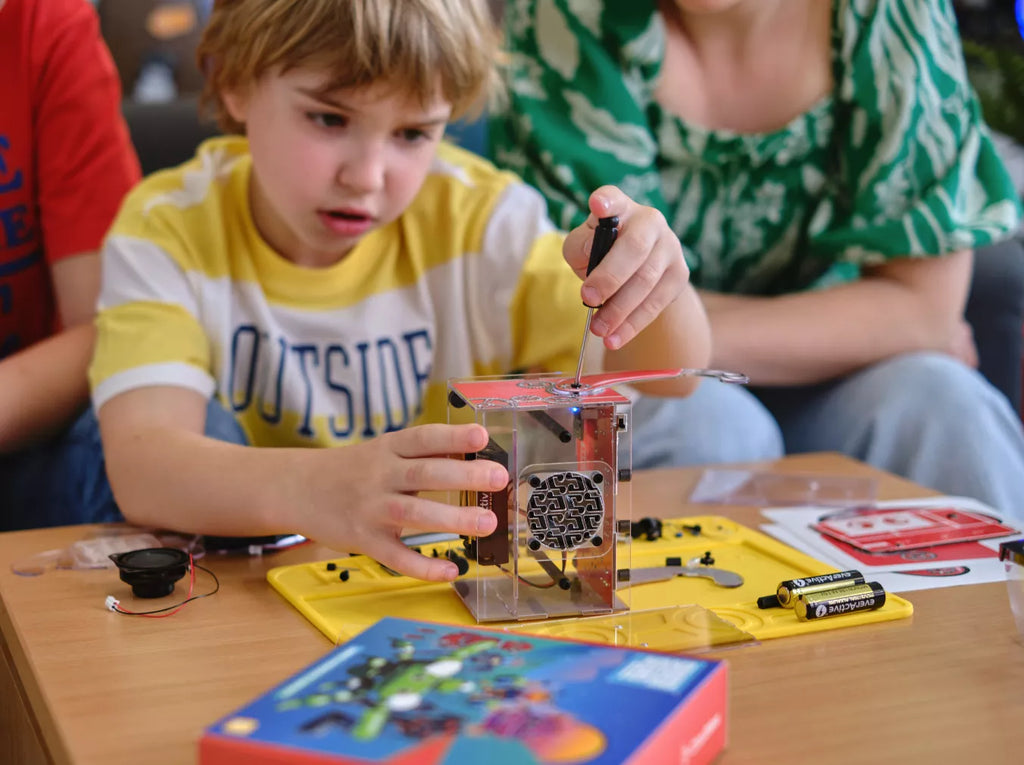
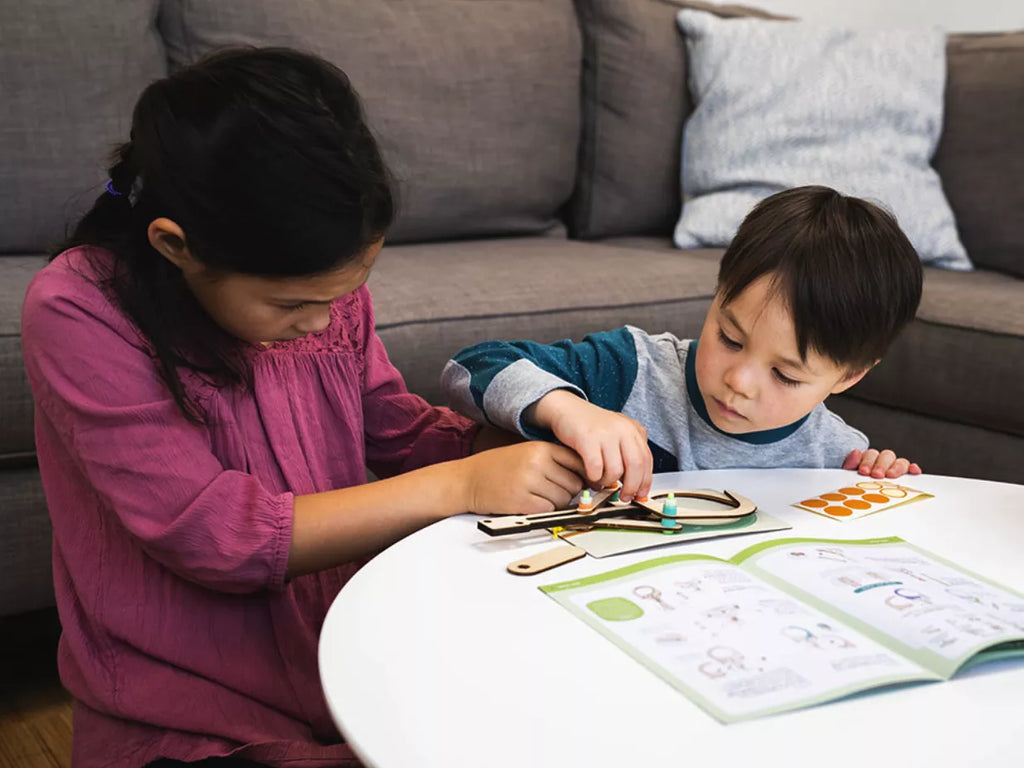
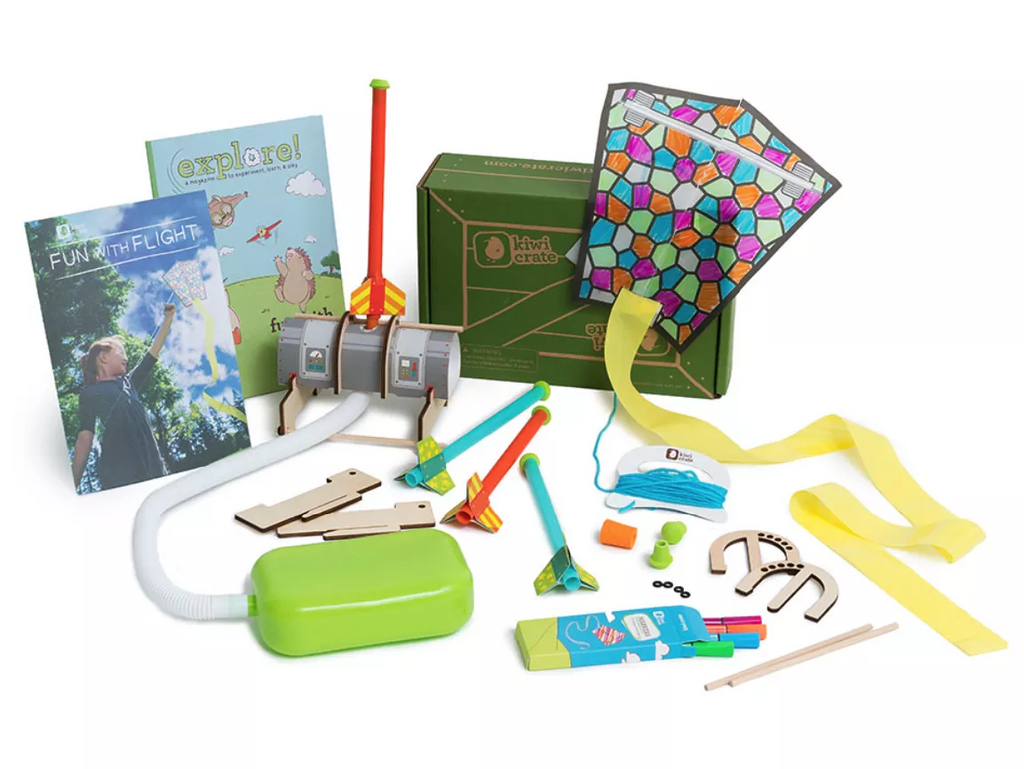


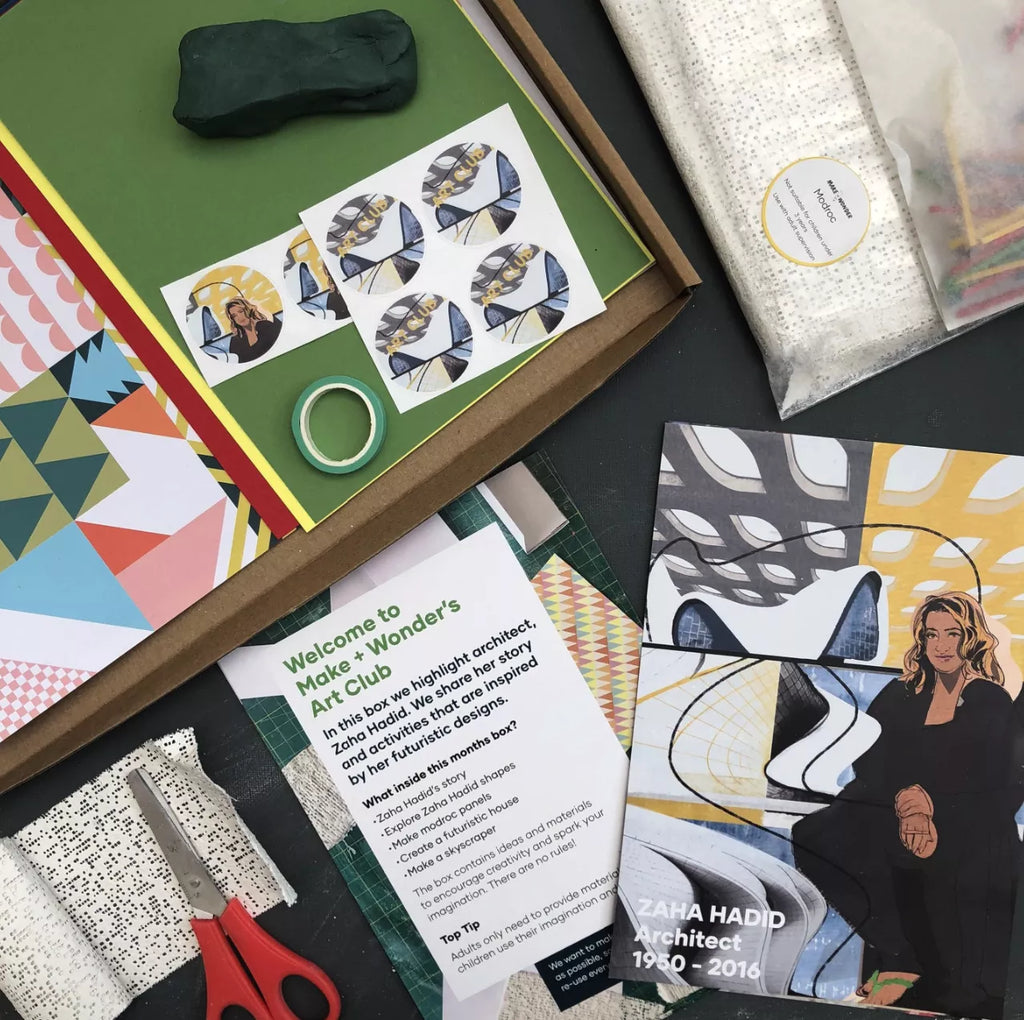
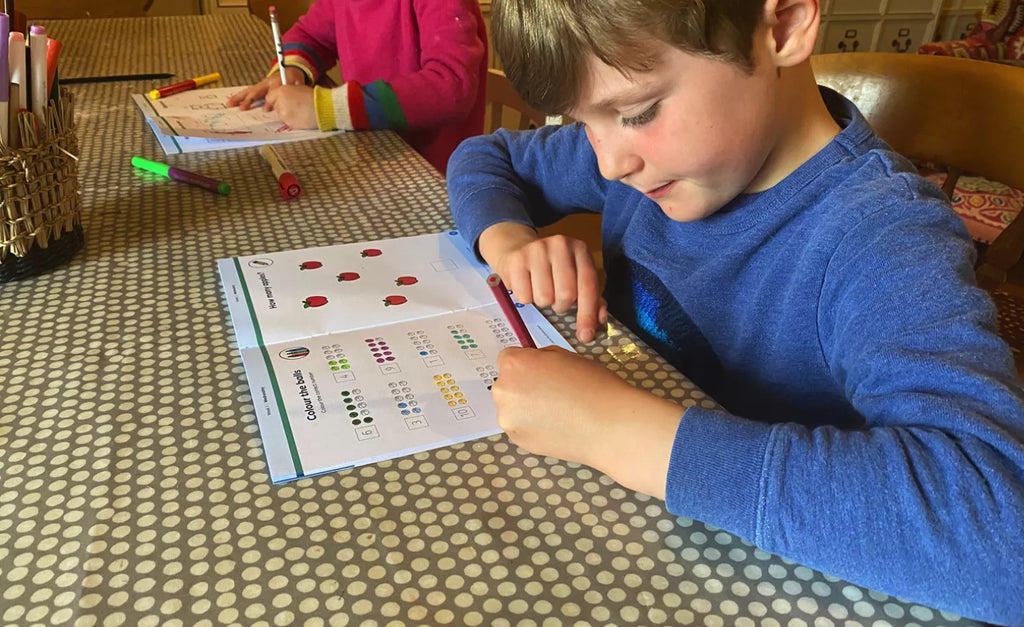


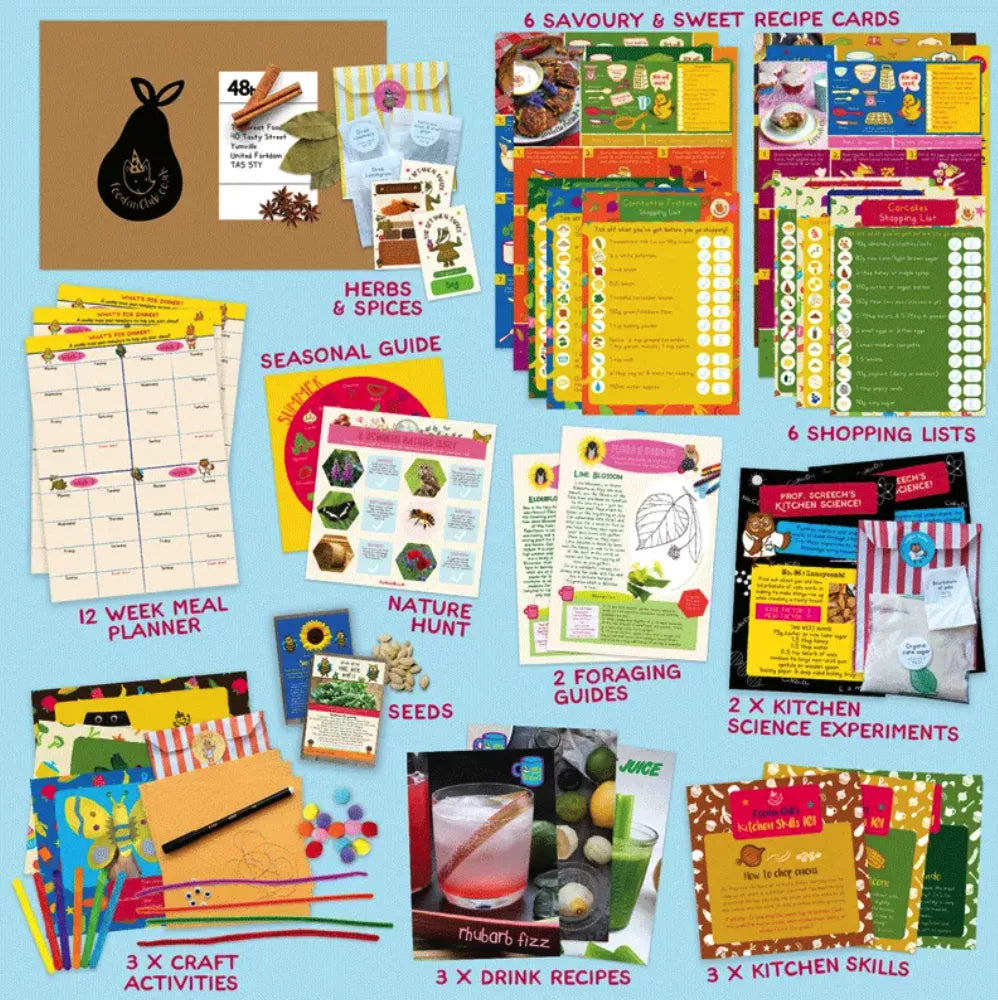
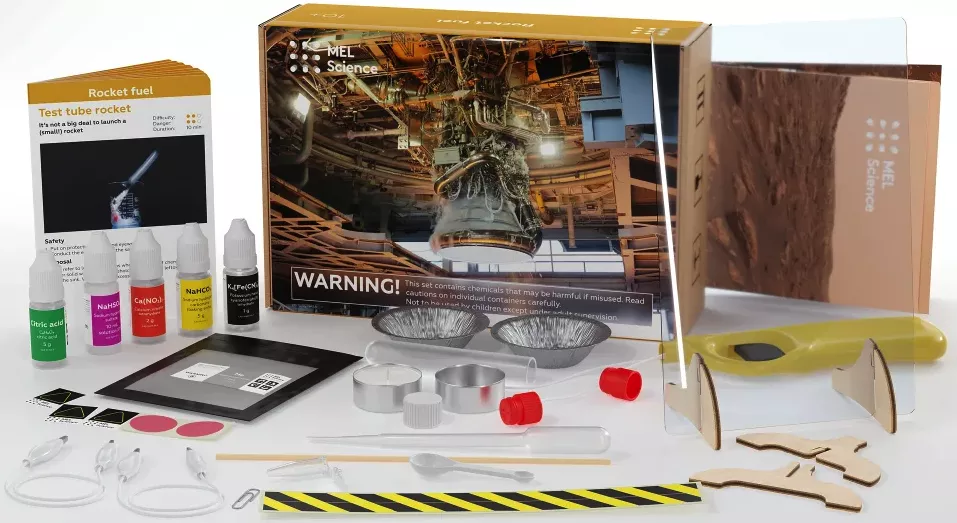

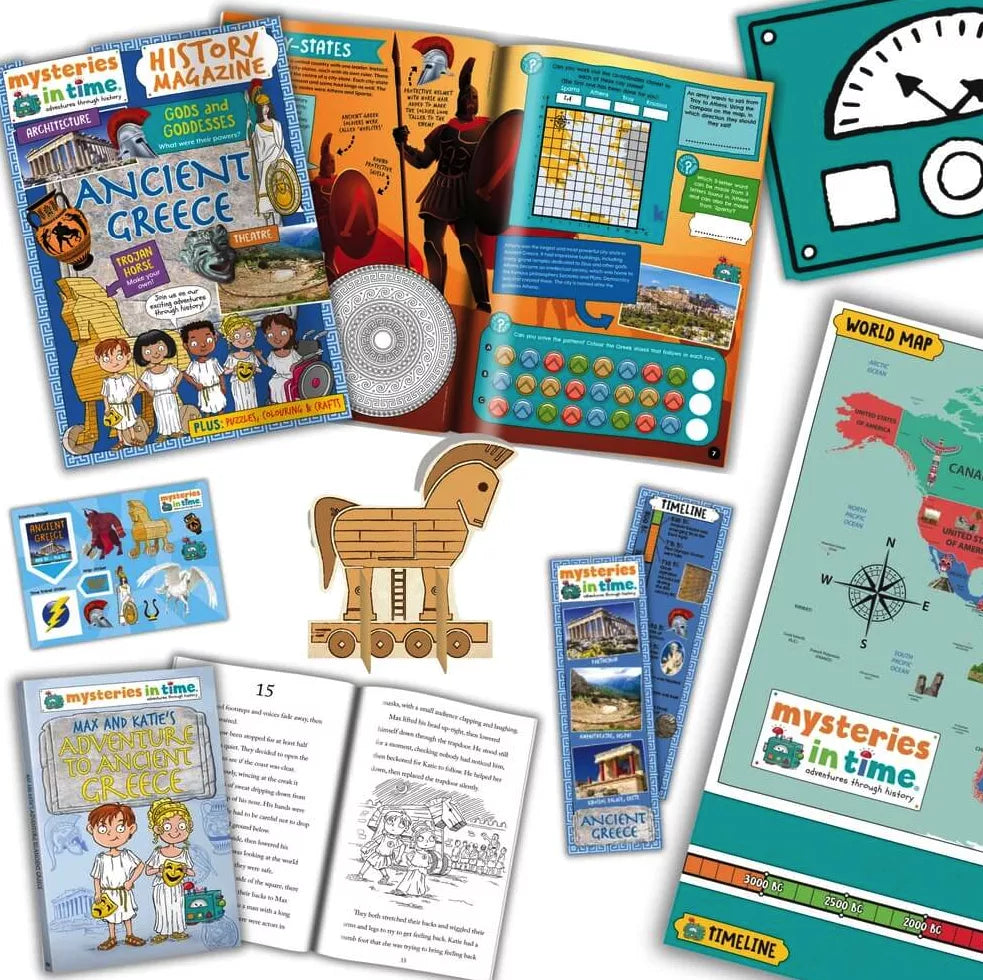

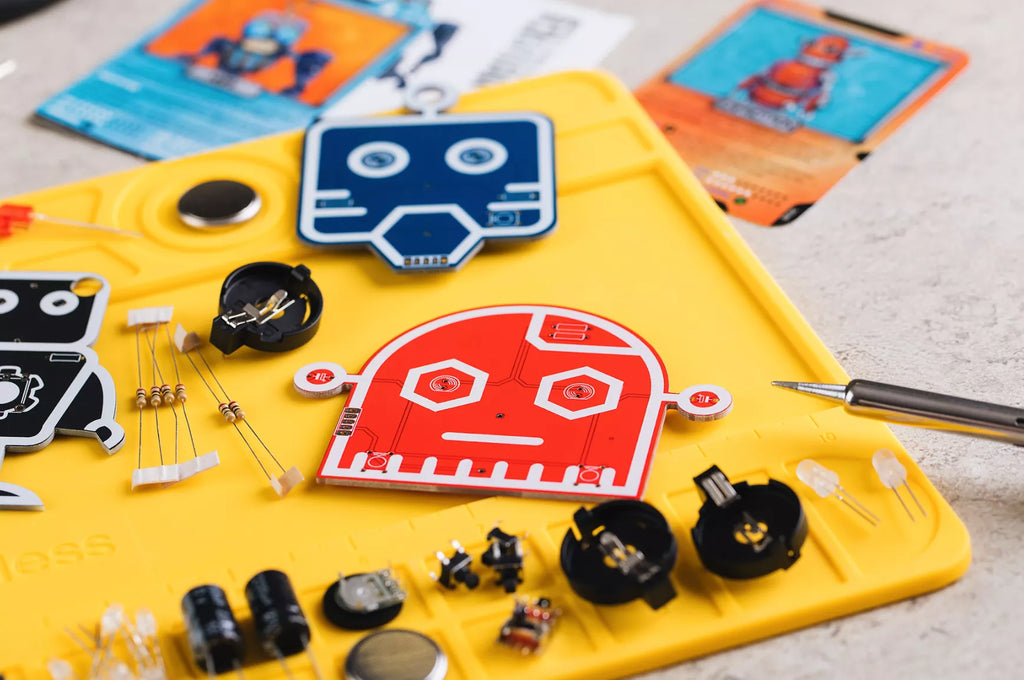

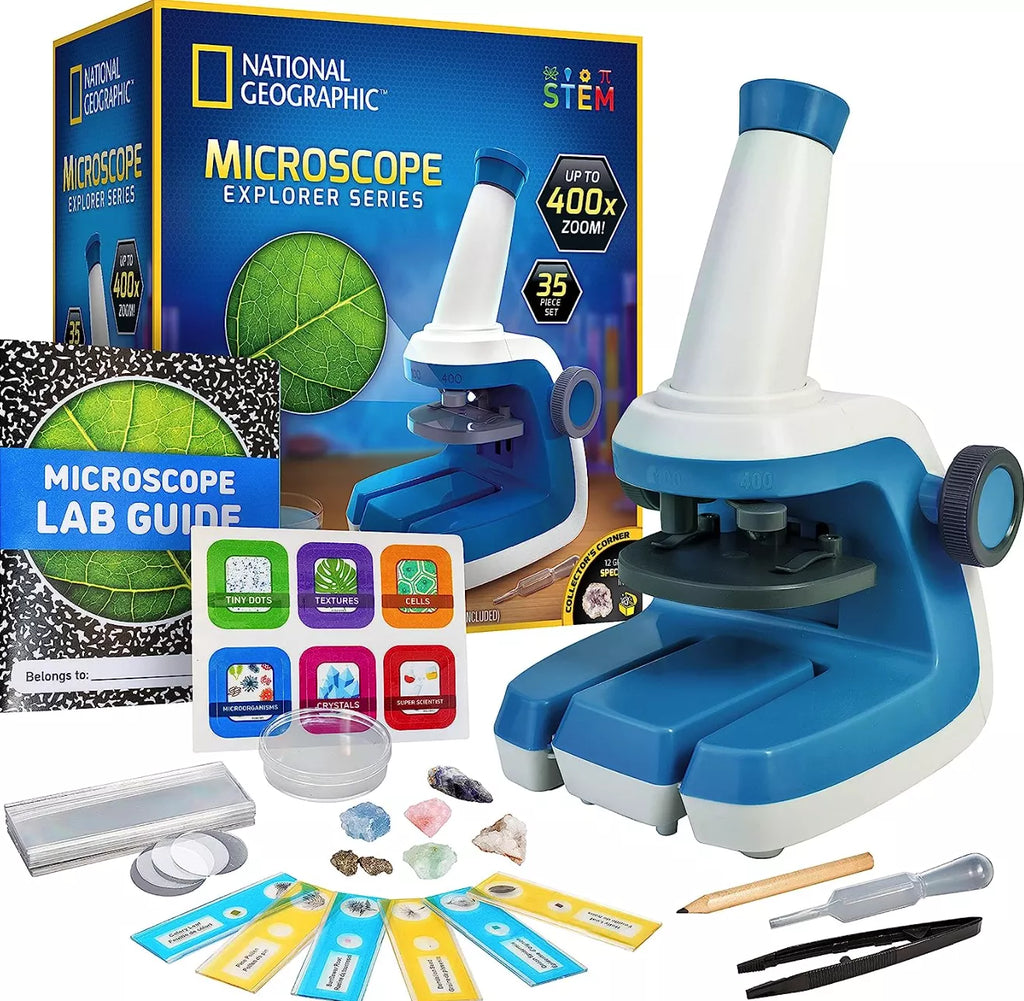
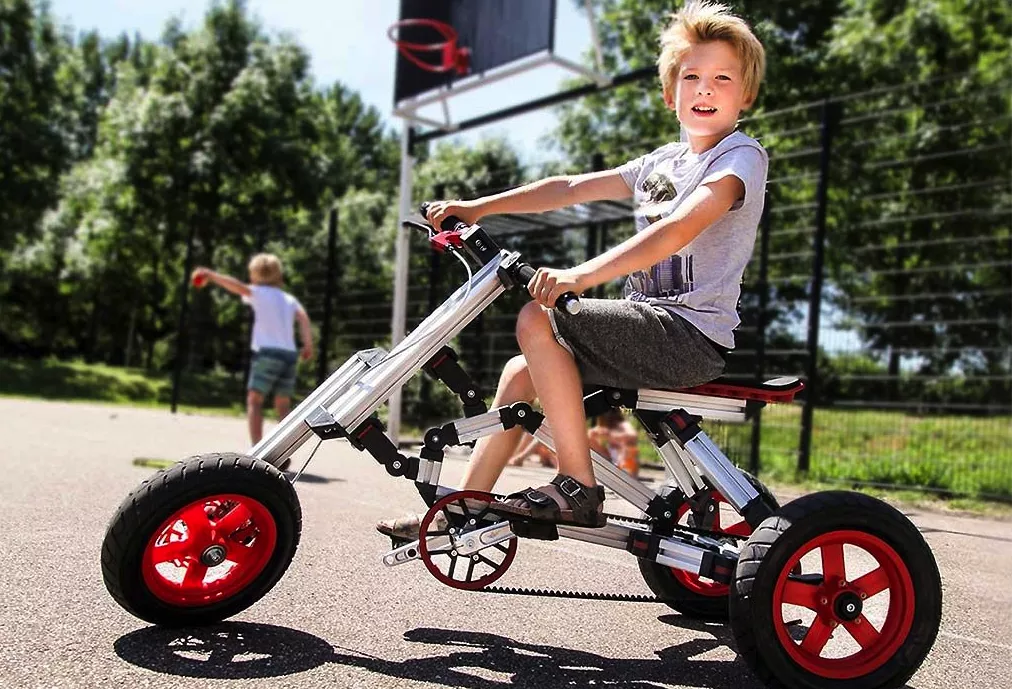
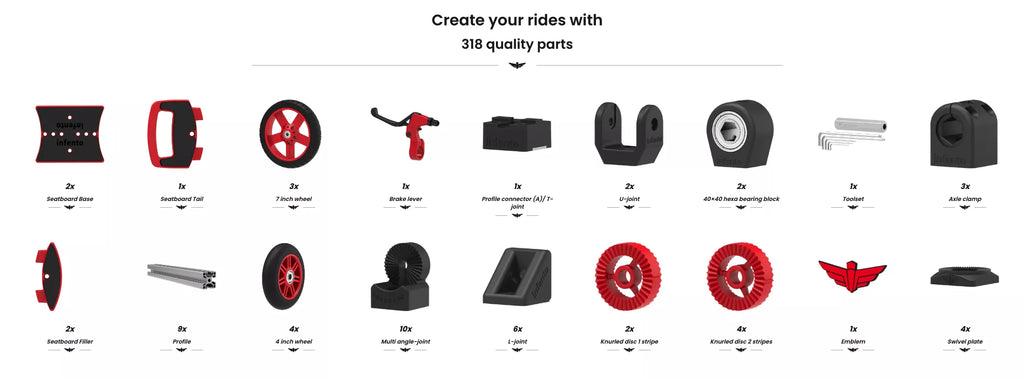
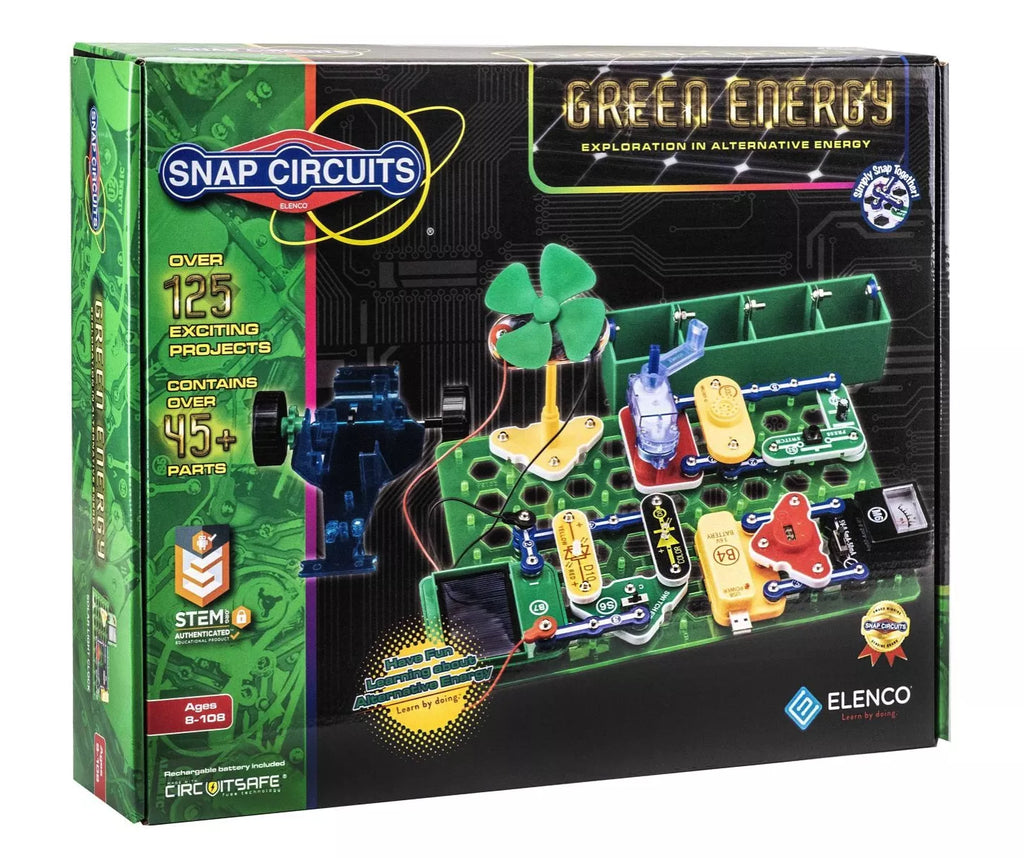
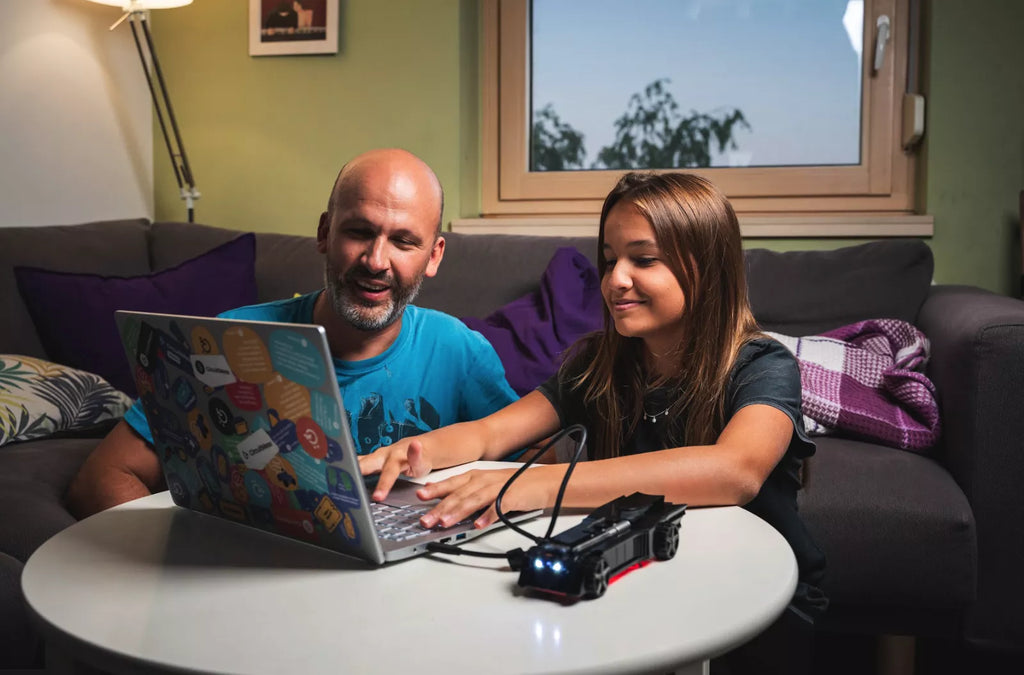

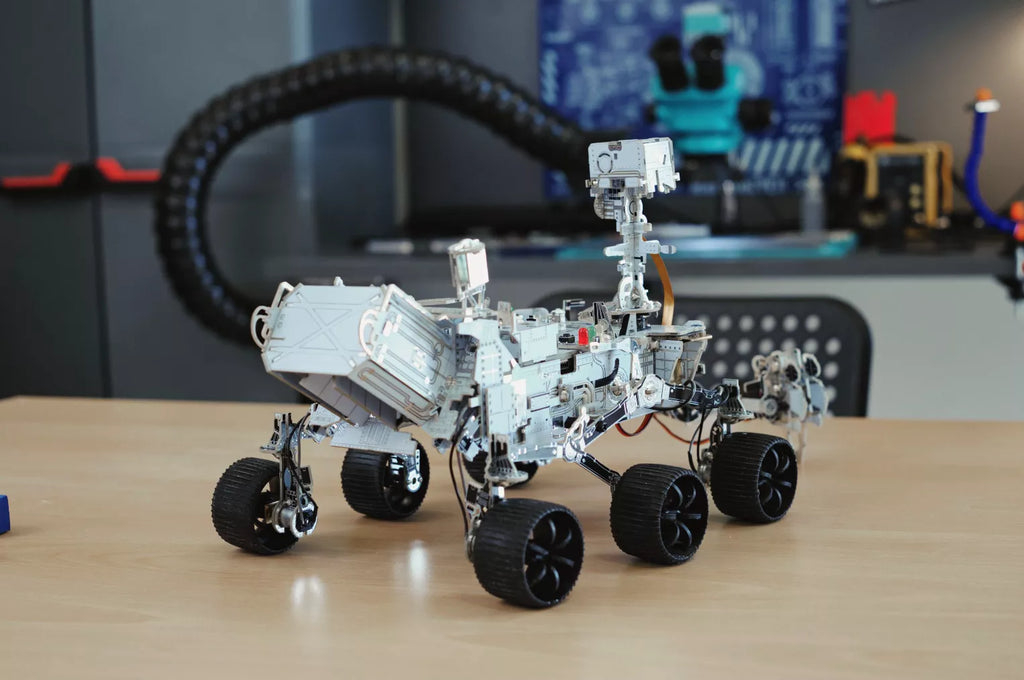
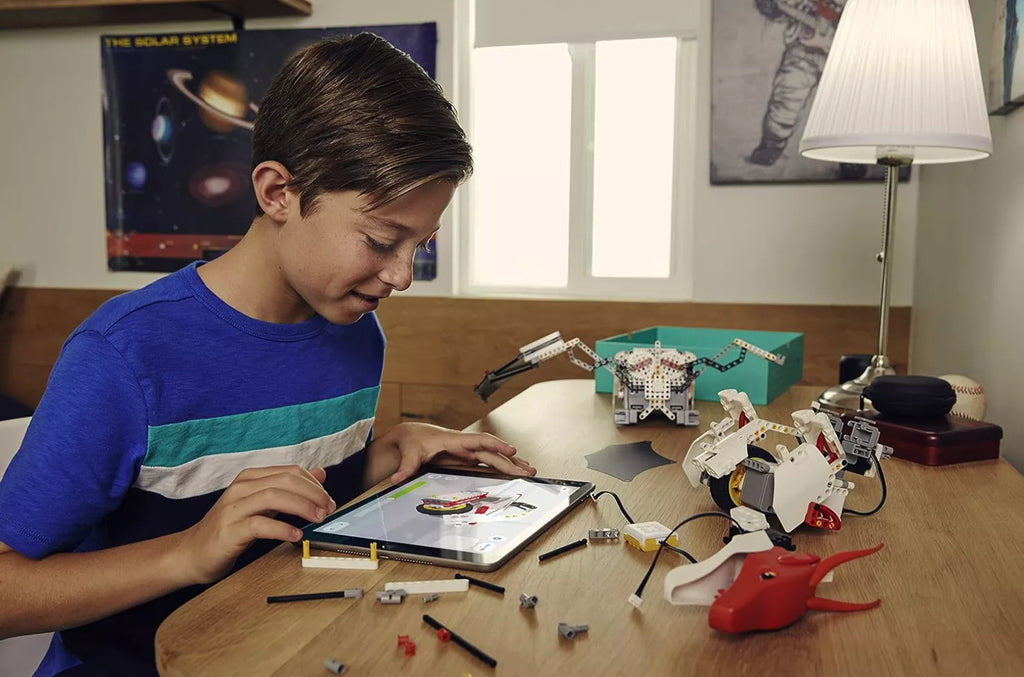



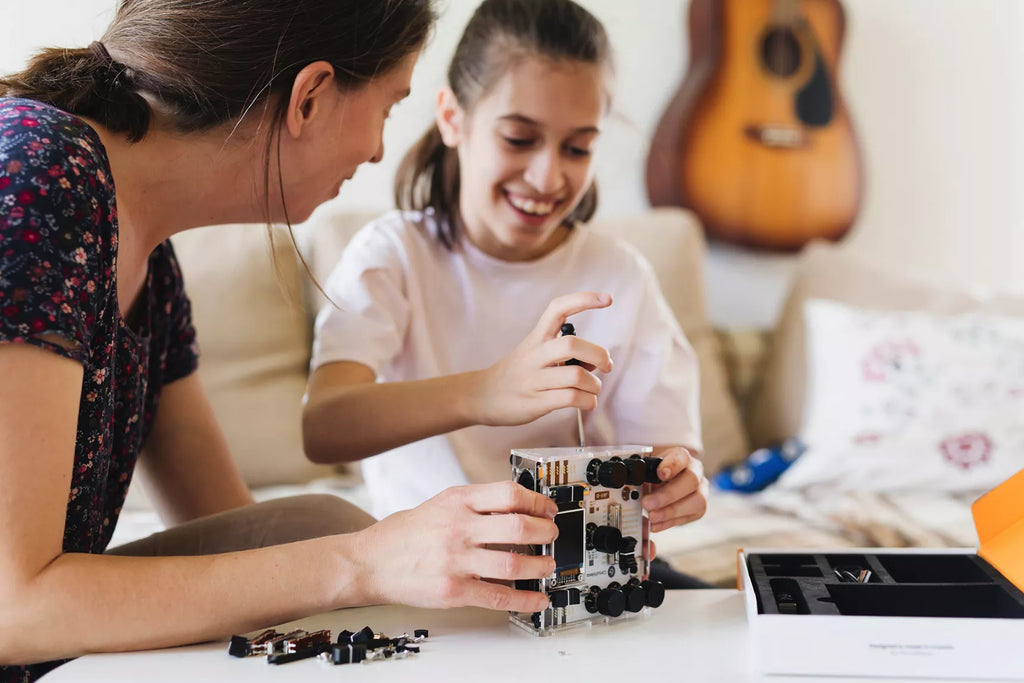
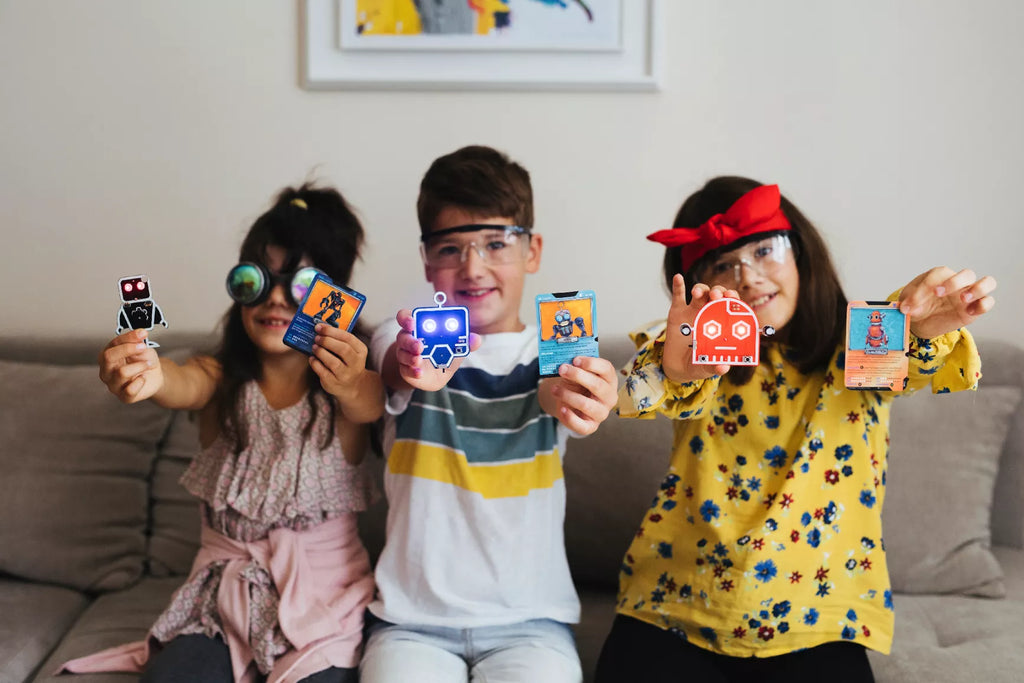
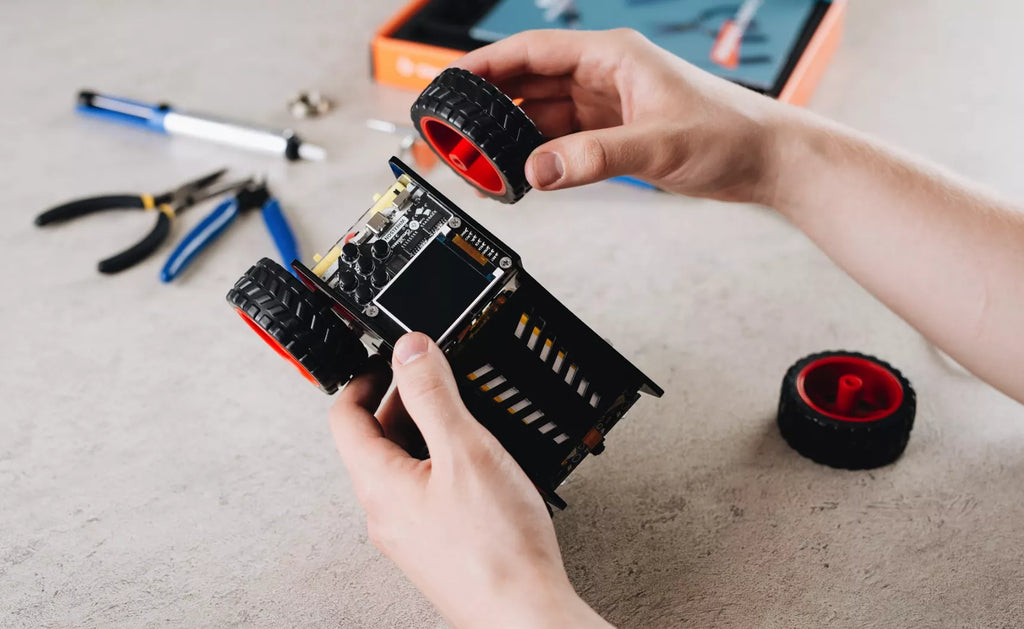
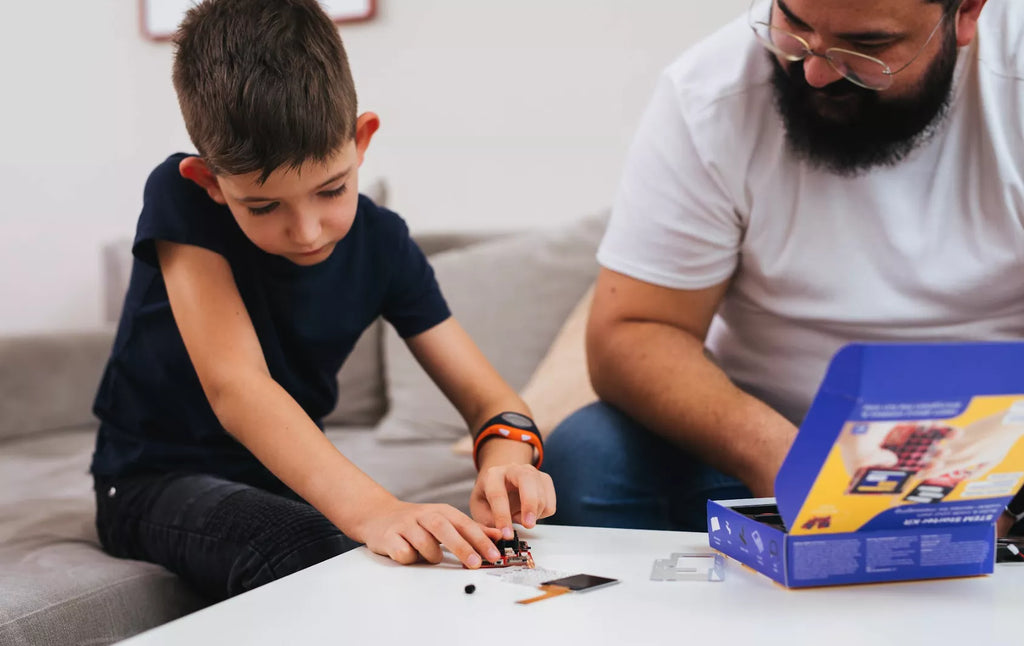




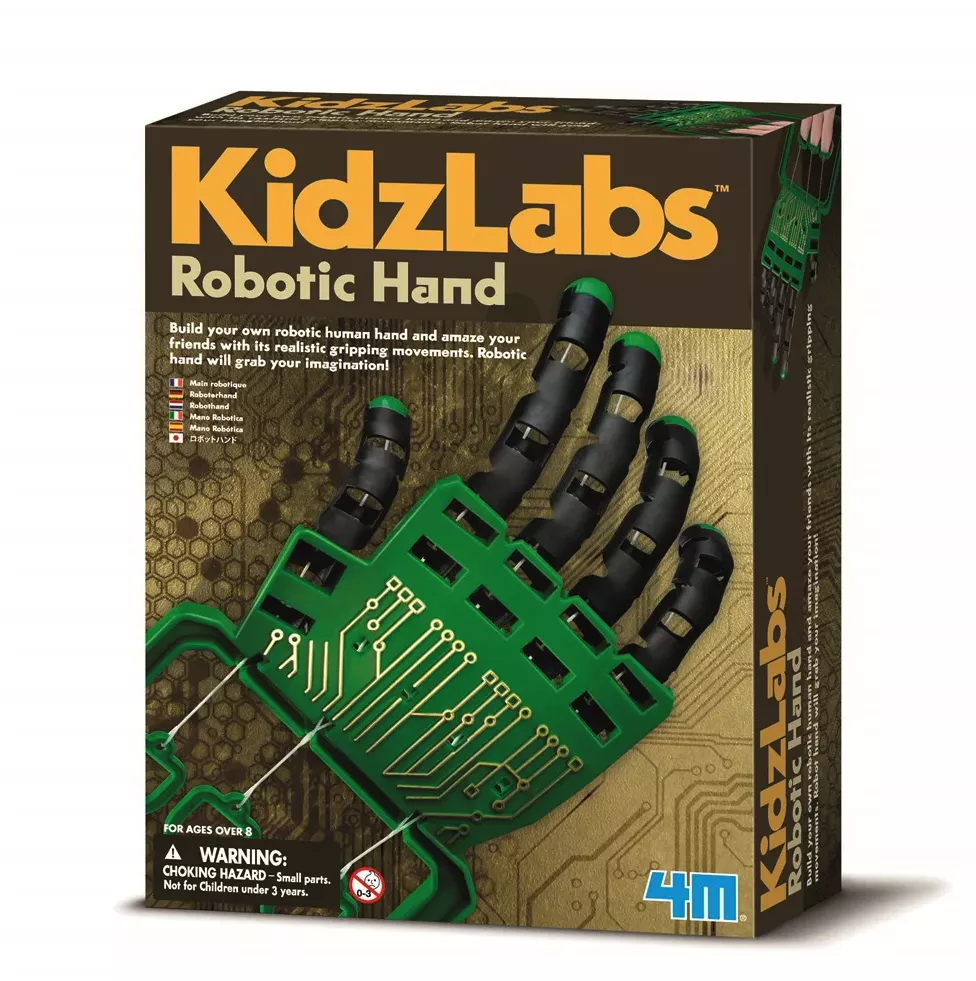




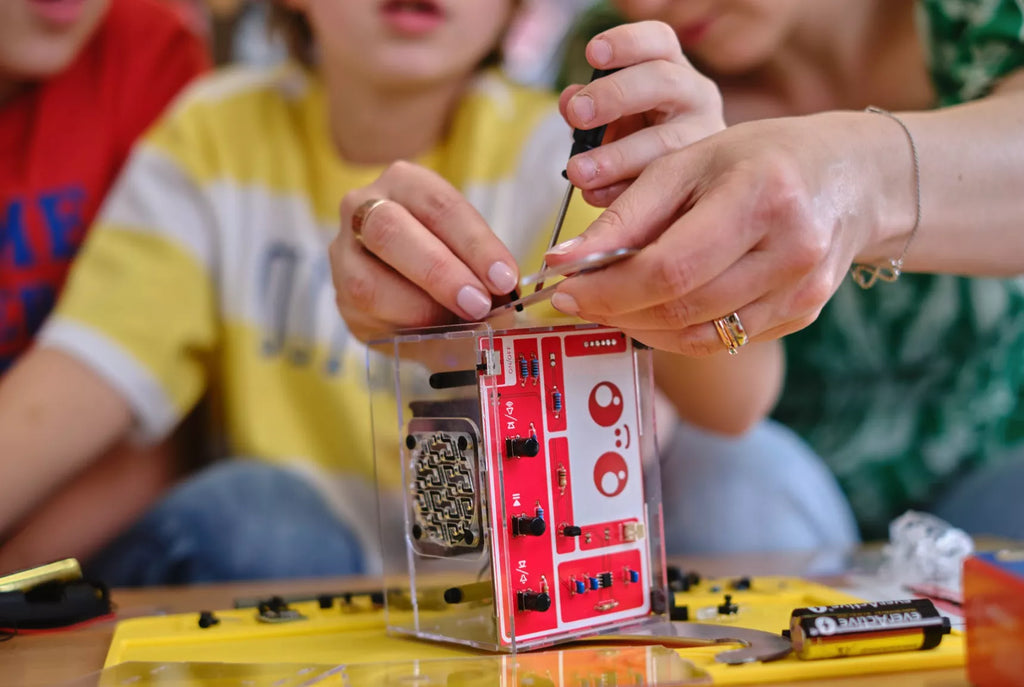
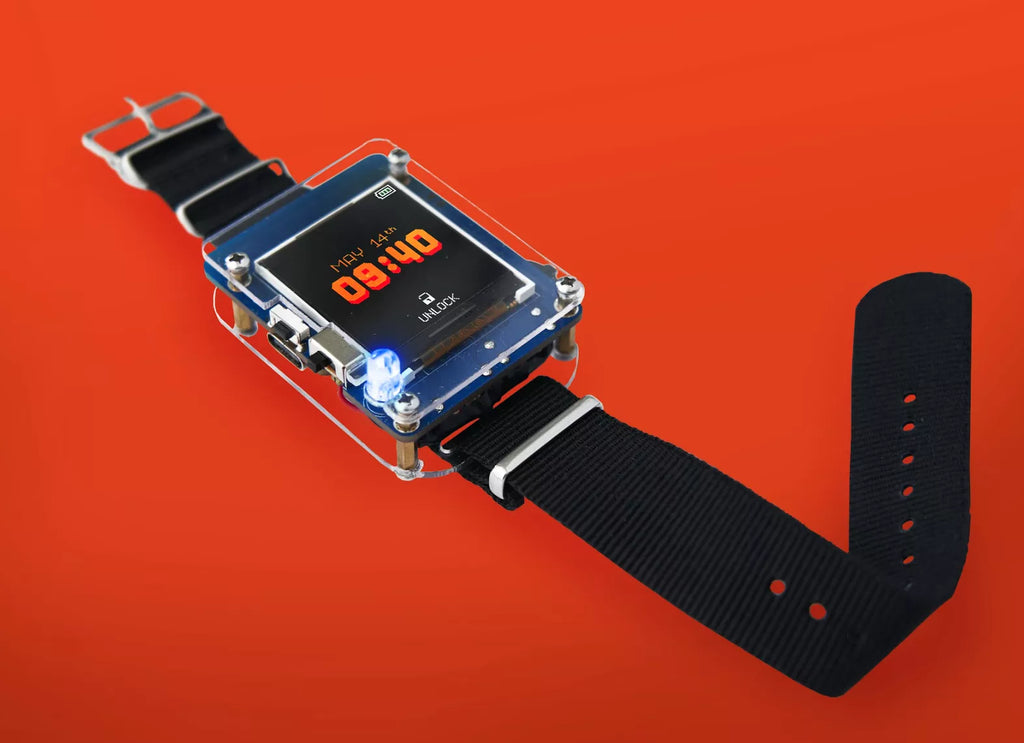
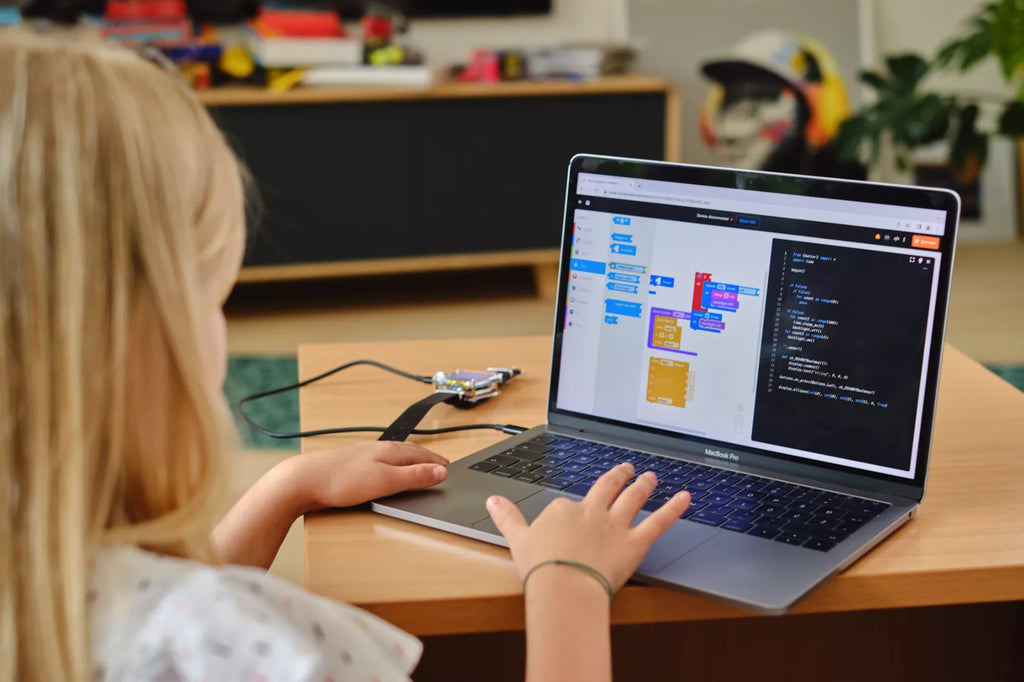




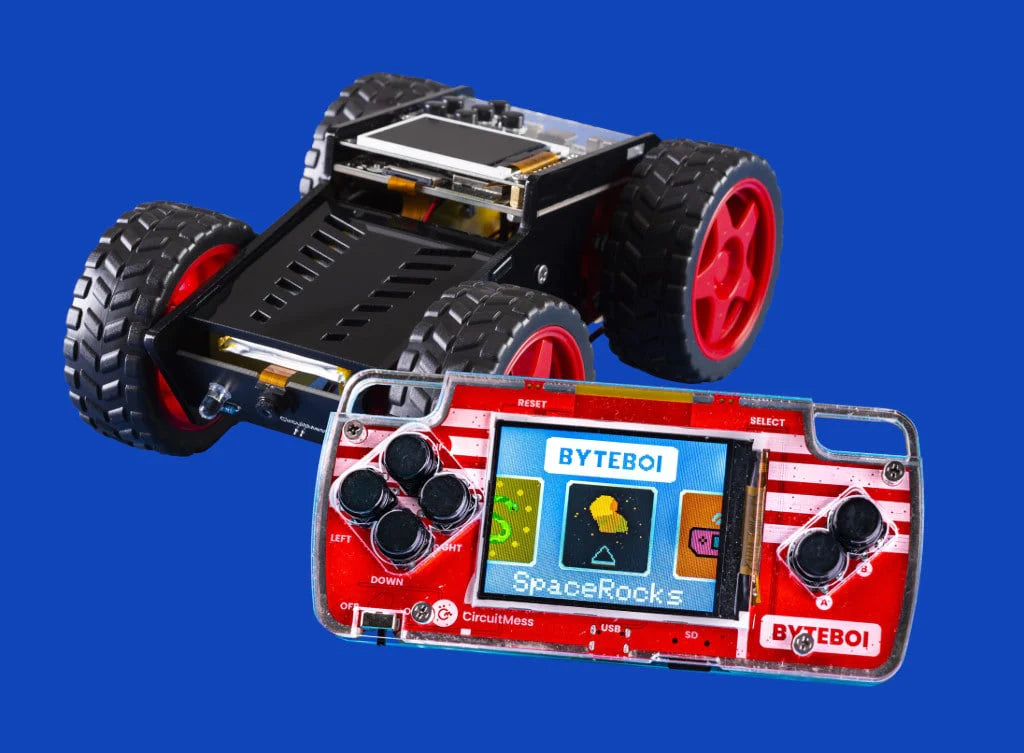
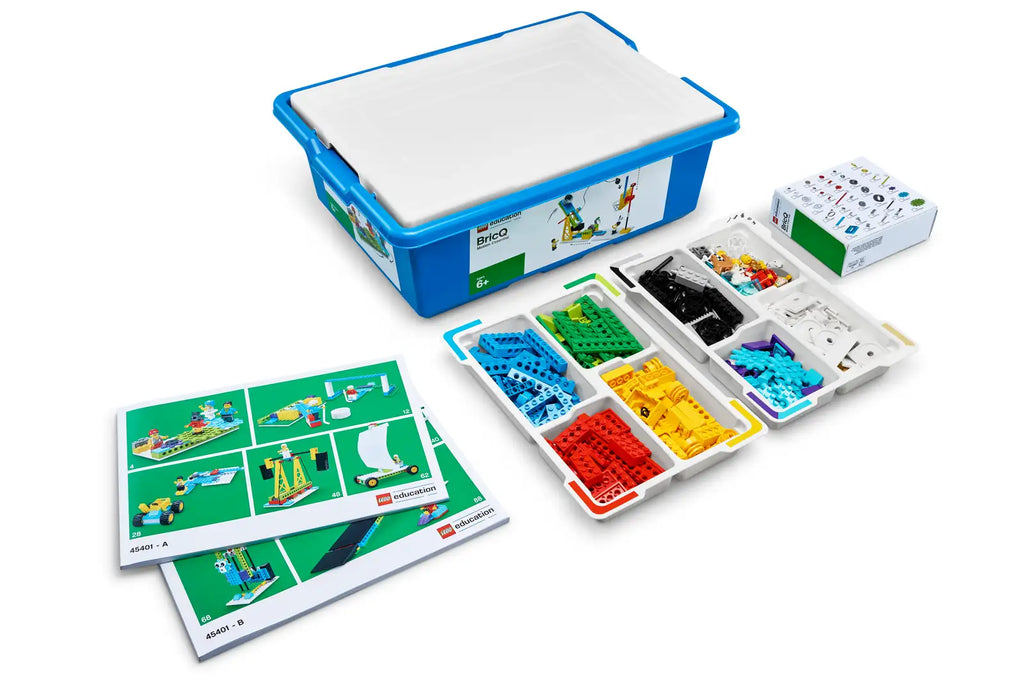
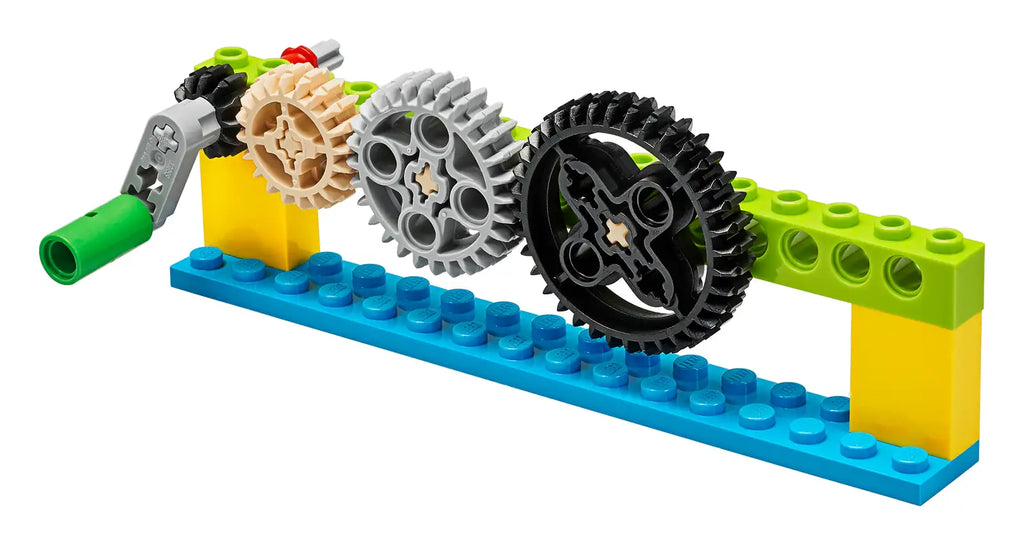




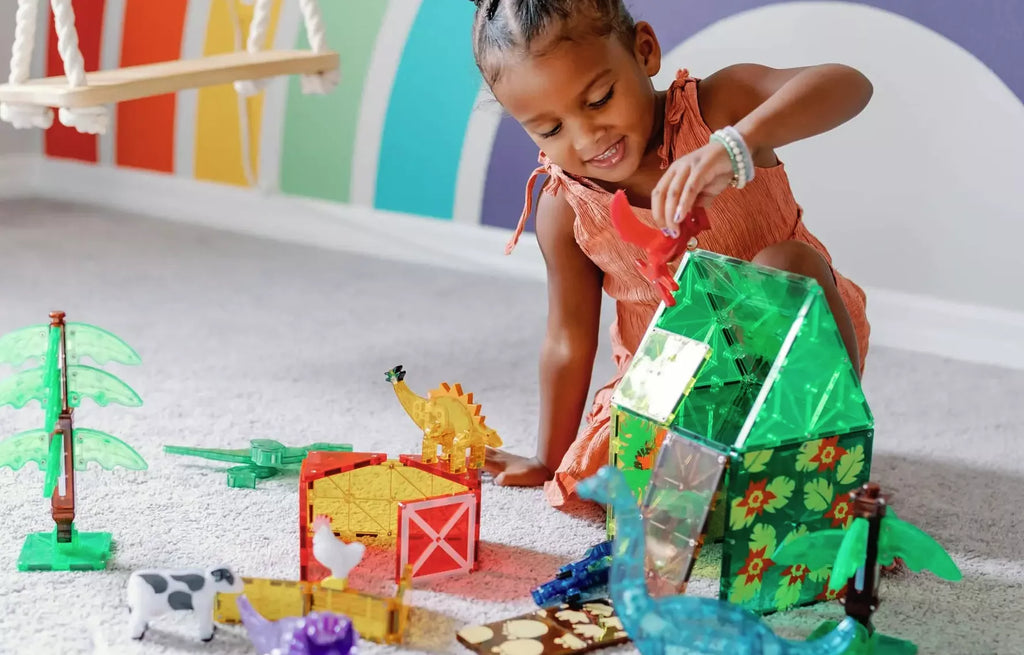

























 Image source:
Image source: 

















